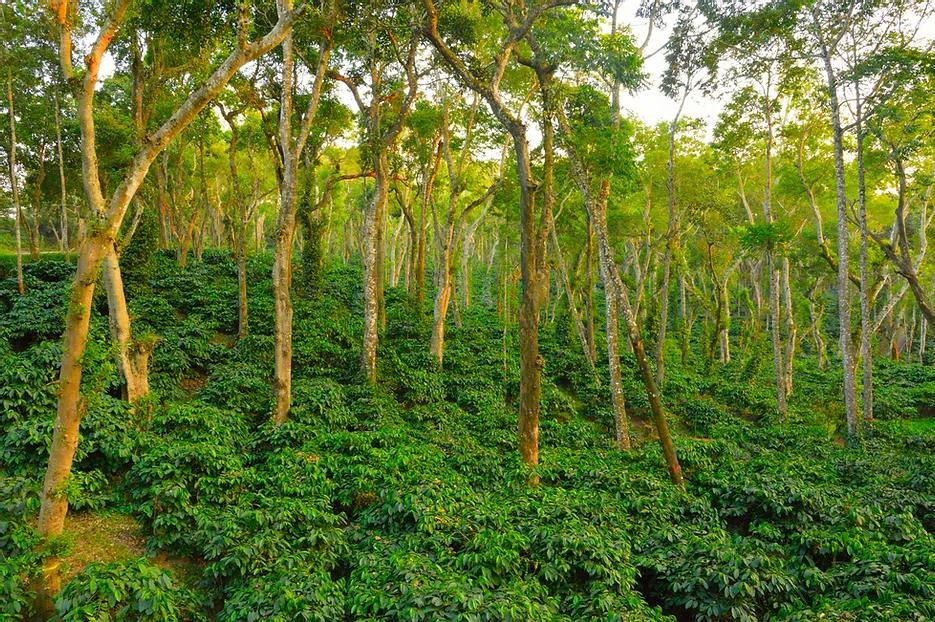Coffee is the second most consumed beverage in the world after water. Also, coffee is the second most traded commodity after crude oil worth over $100 billion worldwide. That puts it ahead of commodities like natural gas, gold, oil, sugar and corn. We drink around 600 billion cups of coffee every year and around 25 million people including my father rely on coffee to support their families. If we look at the coffee farms of world’s largest coffee producing country, Brazil, you will notice that large areas of land is covered with coffee plants and nothing but coffee plants. If you wonder how would they do this, it is obvious that millions of trees are brought down to make coffee farms. This is worrisome when we see through the prism of climate change. The entire ecosystem is destroyed in the making of such farms. Several studies have

coffee farm in Brazil. Pic: Cia Agropecuária Monte Alegre
If I say that my father grows an eco-friendly coffee on his farm in South India, people here in North America probably would say that I am joking. However, I would say that one of the world's finest varieties of coffee comes from my father's farm. As a son of a passionate coffee grower, I have always seen my father growing variety of trees on his farm. The only question I asked him all the time was, why are you growing all these trees on your farm? I also remember telling him that he should follow the Brazilian model and it is common sense that one should grow coffee plants instead of trees on his farm? I doubted his judgment and his business model. And now 20 years later, I realize that my father’s dream was to grow not only coffee but a forest. He has a dense shade-grown coffee farm which resembles a forest. Shade-grown coffee is from coffee plants grown under a canopy of trees promoting natural ecological relationships. Coffee forests in India are unique as they are grown symbiotically along with multiple crops like cinnamon, black pepper, and oranges which, produce an exceptional taste.

Shade-grown coffee on my father's farm in India.
The coffee consumers around the world need to understand that India’s shade-grown ecofriendly coffee forests are exceptional not only because they enrich the taste, but they also enhance the wealth of biodiversity. They invite varieties of wild birds and other animals to the coffee forest. This is unique when compared with other coffee-producing nations in the world. Such a farming process not only shows the nexus between wildlife and the coffee but also encourages wildlife conservation.



Acknowledgement
Special thanks to Dr. Anand T Pereira for providing meaningful photographs.

